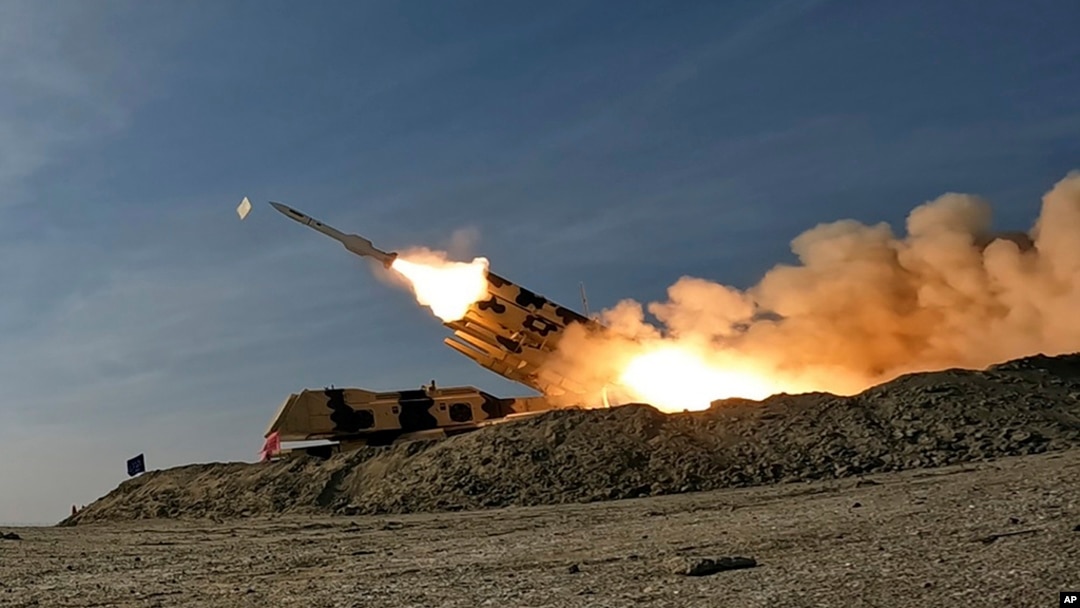Amidst Regional Turmoil, Iran Unveils New Air Defense Systems

Introduction
On February 17th, 2024, amidst simmering tensions in the Middle East, Iran unveiled two new missile systems during a ceremony attended by Defense Minister Brigadier General Mohammad Reza Ashtiani. This announcement comes at a critical time, marked by escalating conflicts in Yemen and the ongoing nuclear deal negotiations between Iran and world powers. While Iran maintains these advancements are solely for defensive purposes, the international community expresses concerns about their potential implications for regional stability.
New Air Defense Systems
The two new systems include the Arman, an anti-ballistic missile system, and the Azarakhsh, a low-altitude air defense system. According to Iranian officials, the Arman boasts the capability to simultaneously engage six targets at distances ranging from 120 to 180 kilometers. The Azarakhsh, on the other hand, can identify and destroy targets within a 50-kilometer radius and possesses four missiles that are ready to fire.
In addition, over the past ten years, Iran has imported aircraft and drone engine parts worth at least $236 million from Turkey, the United Arab Emirates, Germany, the Ukraine, and the United States, despite international sanctions. Data from the Islamic Republic’s customs agency, examined by Iran International, indicates that in just eight months of the current Iranian year the import of goods valued at about $26 million were observed, which are prohibited by the US Treasury’s sanctions against Iran.

Iran’s Stance
Iran maintains that these advancements are solely intended to bolster its defensive capabilities and deter potential aggressors. They emphasize their right to develop their own defense systems and cite the ongoing threats they perceive from different actors. According to officials, Iran launched Fattah in June 2023, its first hypersonic ballistic missile produced domestically with a 1,400 km range. As per Iran, its ballistic missiles are a means of retaliation and deterrence against Israel, the United States, and other possible adversaries in the region. Additionally, Iran highlights its adherence to the Non-Proliferation Treaty (NPT) and its commitment to peaceful nuclear activities. The 2015 nuclear agreement, from which the United States withdrew in 2018, limited Iran’s nuclear program and extended the time required for Tehran to build nuclear material for weapons.
International Concerns
Despite Iran’s assurances, the international community has raised concerns about the potential destabilization these new systems could bring to the already volatile region. International community is of opinion that such advancements could encourage Iran and escalate regional tensions. The United States and European Union have imposed sanctions on Iran. Despite the sanctions, Iran’s nuclear program is expanding. According to data released by the International Atomic Energy Agency (IAEA) in November 2023, Iran has greatly increased the scope of its nuclear program since September 2023. The country has increased its stocks of enriched uranium to a number of levels, including those that are critical for the development of nuclear weapons. The international community is likely to closely monitor Iran’s development and deployment of these new systems which can lead to increased scrutiny and sanctions.
Geopolitical Context
The unveiling of these new air defense systems coincides with several critical developments in the region:
- Iran’s announcement coincides with rising tensions in the Middle East as the Yemen-based group Houthi rebels continue to target ships in the Red Sea and Gulf of Aden. The United States has accused Iran of supporting Houthi rebels and its involvement in these attacks. But, Iran has dismissed US allegations that it is directly involved in Houthi rebel strikes against commercial ships in the Red Sea.
- The ongoing negotiations between Iran and world powers to revive the 2015 nuclear deal remain stalled, with disagreements persisting on key issues like sanctions relief and uranium enrichment levels. This lack of progress further exacerbates tensions and contributes to an environment of uncertainty. Amidst stalled nuclear talks, this new development could complicate the already fragile diplomatic process. It could harden stances on both sides and make it difficult to reach a mutually agreeable solution.
- Israel, which views Iran as its primary regional threat, has consistently expressed concerns about its nuclear program and missile development activities. The unveiling of these new systems is likely to further fuel Israeli anxieties and influence their strategic calculations.
Conclusion
The unveiling of new missile systems by Iran is a significant development. While Iran maintains its peaceful intentions, the international community expresses concerns about the potential for these advancements to destabilize the region and complicate ongoing diplomatic efforts. As the situation in the Middle East remains tense, it is crucial for all parties involved to engage in constructive dialogue and de-escalate tensions to prevent further conflict and ensure regional peace and stability.